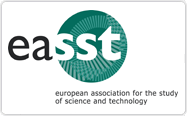Swabbing Dogs and Chauffeuring Pizza Boxes
Crime Scene Alignment Work and Crime Scene Technicians’ Professional Identity
DOI:
https://doi.org/10.23987/sts.112067Abstract
This paper discusses the alignment work that Swedish crime scene technicians perform at the crime scene. It takes as its point of departure the understanding that the criminal justice system is a collaboration of very different epistemic cultures with at times different understandings of “the same” forensic evidence and its production. Nonetheless, the collaboration and the legal security of forensic evidence depends on knowledge in the form of forensic evidence(-to-be) moving easily and stably through it, despite epistemic differences. One way of attaining such stable movement, the article argues, is the crime scene technicians’ alignment work when they recover and package traces from the crime scene – for example body fluids, fingerprints, and fibers – for transport to the forensic science laboratory. Their crime scene alignment work, it shows, is not only a core part of the crime scene technicians’ contribution to the collaborative production of forensic evidence, it is also a source of professional pride, identity, and community for them. Thus, the crime scene technicians’ alignment work is not only important for the movement of knowledge through the Swedish criminal justice system, but is also an integral part of their professional self-understanding.
Downloads
Published
Versions
- 2023-12-15 (2)
- 2023-01-18 (1)
Issue
Section
License
Copyright (c) 2023 Corinna Kruse

This work is licensed under a Creative Commons Attribution 4.0 International License.





